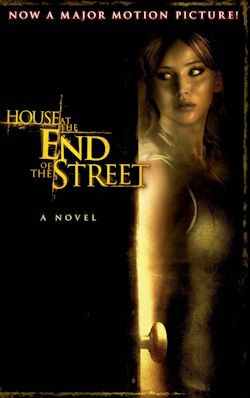Lily Blake’s novel, “The House At The End Of The Street,” emerges from the shadowy corners of a screenplay by David Loucka, itself inspired by a story by Jonathan Mostow. For readers familiar with book-to-movie adaptations, this novelization offers a unique perspective – the reverse journey from screen to page. As a young adult horror thriller, it promises a suspenseful narrative rather than explicit gore, leaning into the unsettling atmosphere surrounding the infamous house at the end of the street.
Clocking in at a concise 190 pages, “The House at the End of the Street” is designed for a quick, engaging read. The pacing is brisk, maintaining a sense of suspense that keeps you subtly hooked. While the core premise isn’t entirely novel within the horror genre, it’s the twist that serves as the book’s most distinctive element. The narrative successfully holds your attention, drawing you into its world, even if it treads familiar thematic ground. To delve too deeply into specifics risks unraveling the very twist that makes this story memorable, so discretion is key to avoid spoilers.
However, while the story succeeds in generating suspense, the writing style itself doesn’t reach the same heights. It’s functional and clear, but lacks the immersive descriptiveness that would allow readers to fully visualize the characters and their emotional landscape. The novel bears the distinct imprint of its screenplay origin, reading almost like a scene-by-scene account of a movie. This isn’t necessarily a flaw, but it does contribute to a slightly detached, “wooden” feel in the prose. Despite this, the underlying story suggests that the movie adaptation could be quite compelling, translating the suspense visually.
 The House at the End of the Street book cover featuring Jennifer Lawrence and Max Thieriot, highlighting suspense and mystery
The House at the End of the Street book cover featuring Jennifer Lawrence and Max Thieriot, highlighting suspense and mystery
Despite not being a work of literary grandeur, “The House at the End of the Street” effectively delivers within its chosen genre. It grabs your attention early on, prompting a desire to see the story unfold. While it might not induce nail-biting tension, it maintains engagement throughout. The narrative centers around Sarah and her daughter Elissa, whose relationship has become strained following Elissa’s father’s departure. Seeking a fresh start and hoping to guide Elissa away from perceived mistakes, Sarah relocates them from the city to a quieter small town. They find an affordable rental due to its proximity to the infamous “house at the end of the street”—the site of a double murder committed by a teenage daughter years prior.
Adding to the town’s unease, the son from the family involved in the tragedy, Ryan, still resides in the house, much to the disapproval of the community. Elissa’s path crosses with Ryan’s one rainy evening when he offers her a ride home. This chance encounter sparks an unlikely friendship, developing against Sarah’s protective instincts and drawing Ryan back into the scrutinizing gaze of the town he’s tried to avoid.
“The House at the End of the Street” provides a light and suspenseful escape, reminiscent of classic low-budget horror movies. If you appreciate thrillers with a focus on suspense over excessive gore, and enjoy stories like “Scream” or “A Nightmare on Elm Street” but with a young adult twist, this novel should appeal to you. Approach it with open-mindedness and tempered expectations, and you’ll likely find “The House at the End of the Street” to be an entertaining and quickly consumed read.
